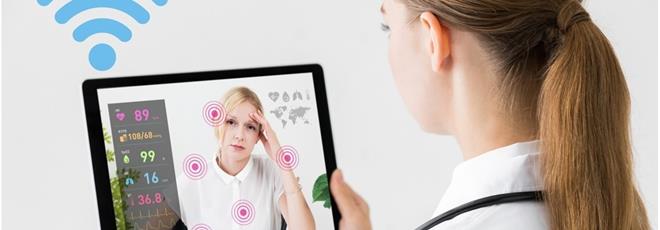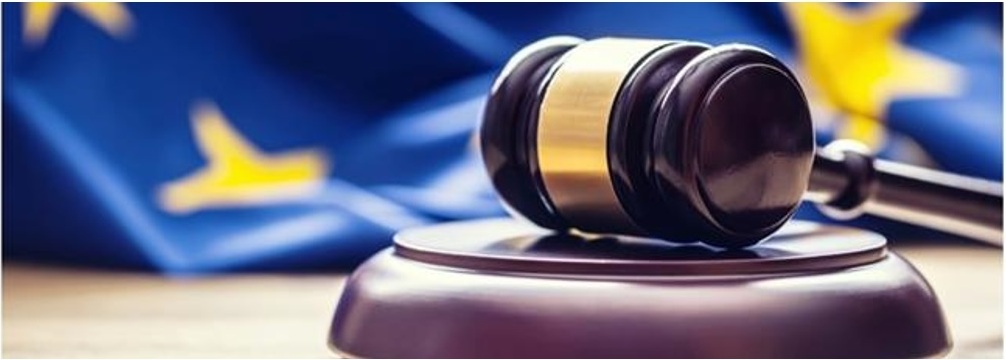Is Face Recognition On Outside Security Cameras Effective All The Time
The feature common to all these confusing technologies is Artificial Intelligence (AI) and, more precisely, deep learning, where a system can acquire from data.
It's a central component of the latest-generation algorithms adult past Thales and other key players. It holds the secret to face detection, face tracking, face match, and real-time translation of conversations.
Confront recognition systems are getting better all the time.
According to a contempo NIST report, massive gains in recognition accuracy have been fabricated in the last five years (2013- 2018) and exceed the 2010-2013 period.
Near of the face up recognition algorithms in 2018 outperform the most authentic algorithm from late 2013.
In its 2018 test, NIST found that 0.2% of searches in a database of 26.6 meg photos failed to match the correct image, compared with a four% failure rate in 2014.
There'south more.
In NIST's 2020 tests, the best facial identification algorithm has an error rate of 0.08% - that'south less than one fault for 1.000 images. (source: How accurate are facial recognition systems, CSIS)
Yes, you understand that right.
It'due south a 50x improvement over half-dozen years.
Artificial neural network algorithms are helping face recognition algorithms to be more accurate.
A study published in June 2019 estimates that past 2024, the global facial recognition market would generate $7billion of revenue, supported by a compound annual growth rate (CAGR) of 16% over 2019-2024.
For 2019, the market was estimated at $three.2 billion.
The two most meaning drivers of this growth are surveillance in the public sector and numerous other applications in various market segments.
Accenture, Aware, BioID, Certibio, Fujitsu, Fulcrum Biometrics, Thales, HYPR, Idemia, Leidos, M2SYS, NEC, Dash, Phonexia, and Smilepass.
The main facial recognition applications can be grouped into 3 principal categories.
Here are the top 3 awarding categories where facial recognition is being used.
Forensic specialists tin use Automatic Biometric Identification Systems (ABIS) to compare multiple types of biometrics.
This market is led by increased activity to combat offense and terrorism.
The benefits of facial recognition systems for policing are evident: detection and prevention of crime.
ane. Find Missing children and disoriented adults.
2. Place and find exploited children.
Isolating the appearances of specific individuals in a video sequence is critical. Information technology can accelerate investigators' jobs inkid exploitationcases also.
Video analytics can help build chronologies, rails activity on a map, reveal details, and discover not-obvious connections amongst the players in a instance.
3. Place and track criminals.
Face recognition CCTV tin exist used to enable police to track and identify by criminalssuspected of perpetrating an additional infraction. Police tin also have preventive actions. Past using an prototype of a known criminal from a video or an external picture (or a database), operators can detect matches in live video and react before it's too belatedly.
4. Back up and accelerate investigations.
Facial recognition CCTV systems tin can be used to support investigators searching for video evidence in the aftermath of an incident.
The ability to isolate suspects and individuals' appearances is disquisitional for accelerating investigators' review of video evidence for relevant details. They can better sympathize how situations developed.
ii. Health
Meaning advances have been made in this area.
Thanks to deep learning and face analysis, information technology is already possible to:
- track a patient'southward use of medication more than accurately
- notice genetic diseases such equally DiGeorge syndrome with a success charge per unit of 96.6%
- back up pain management procedures.

3. Banking and retail
This surface area is undoubtedly the one where the utilize of facial recognition was least expected. And yet, quite possibly, it promises the most.
Know Your Customer (KYC) with facial recognition online is sure to be a hot topic in 2021.
Why?
Because 64% of chief checking account openings were done online in Q2 2020 ( and 36% in branch) in the United States alone.
The pandemic has accelerated this emerging dynamic, and many branches are temporarily closed.
Besides, increased mobile usage urges businesses to accept a mobile-first focus and develop fully mobile convenient onboarding experiences.
During the selfie process, to avert fraud using a static image, a liveness detection shall be provided past the engineering science.
Liveness detection proves that the selfie taken comes from a live person.
The result?
Adapting to current customer preferences, financial institutions (FIs) invest in digital onboarding through online and mobile channels.

Facial recognition with liveness detection simplifies online onboarding and KYC procedures. Thales is a major provider of identity verification solutions, including this feature.
According to Forbes, digital account opening (DAO) was the most popular engineering science in banking for the tertiary consecutive year. Close to fourscore% of all financial institutions add new DAO systems or enhance their existing ones in 2020 and 2021.
This of import trend is being combined with the latest marketing advances in customer experience.
Past placing cameras in retail outlets, it is now possible to analyze shoppers' beliefs and improve the client purchase process.
How exactly?
Like the system recently designed by Facebook, sales staff are provided with customer information taken from their social media profiles to produce expertly customized responses.
The American department store Saks 5th Avenue is already using such a system. Amazon Go stores are reportedly using it.
How long before the selfie payment?
Since 2017, KFC, the American rex of fried chicken, and Chinese retail and tech behemothic Alibaba have been testing a face recognition payment solution in Hangzhou, China.
In March 2021, 52 Perekrestok stores (Перекрёсток) from X5 retail group have launched touchless payment past face for self-service checkout terminals with Visa Payment System and Sberbank.
The facial recognition payment system would be used in 3,000 stores past yearend, co-ordinate to Yahoo!
There'due south more.
Moscovites will be able to pay for metro rides according to Interfax at the cease of 2021.
#4 Mapping of new users
While the United States currently offers the largest marketplace for confront recognition opportunities, the Asia-Pacific region sees the fastest growth in the sector. China and India pb the field.
Face recognition in China
Face recognition technology is the new hot topic in China, from banks and airports to law.
Now authorities are expanding the facial recognition sunglasses program as police are showtime to apply them in Beijing's outskirts.
China is also setting upwardly and perfecting a video surveillance network countrywide.
According to CNBC, over 200 million surveillance cameras were in utilize in 2018, and over 500 million are expected by 2021.
The facial recognition towers in Chinese cities are emblematic of this move.
This is linked to thesocial credit systemthe Chinese government is developing.
In the TOP 10 cities with the near street cameras per person, Chongqing, Shenzhen, Shanghai, Tianjin, and Ji'nan atomic number 82 the pack.
London is #6 and Atlanta #ten, according to the Guardian of 2 December 2019.
There'southward more.
Chinese police force are working with artificial intelligence companies such as Yitu, Megvii (in partnership with Huawei), SenseTime, and CloudWalk, according to The New York Times of 14 April 2019.
China's ambitions in AI (and facial recognition technology) are loftier. The country aims to become a earth leader in AI by 2030.
Surprisingly, China provides strong biometric data protection against individual entities AND increases the government'southward access to personal data.
This paradox is evidenced by privacy expert Emmanuel Pernot- Leplay in his report dated 2 November 2020.
Facial recognition in Asia
Facial recognition will be an of import topic for the 2020 Olympic Games in Tokyo (postponed to September 2021).
This engineering will be used to place authorized persons and grant them admission automatically, enhancing their experience and safe. It's also being used in Nihon for easier mobile banking access.
In Sydney, face up recognition is undergoing trials at airports to aid move people through security much faster and safer.
In India, the Aadhaar project is the largest biometric database in the earth. It already provides a unique digital identity number to 1.29 billion residents every bit of the end of March 2021.
UIDAI, the potency in charge, announced that facial authentication would be launched in a phased roll-out.
It's presently being tested for fiscal services (October 2020.)
Face hallmark will be available as an add-on service in fusion style and one more hallmark factor like a fingerprint, Iris, or TOTP.
India could also ringlet out the world's well-nigh extensive face recognition system in 2021.
The National Crime Records Bureau (NCRB) has issued an RFP inviting bids to develop a nationwide facial recognition system.
According to the 160-folio document, the system will exist a centralized web application hosted at the NCRB Data Middle in Delhi. It will be available for admission to all the police force stations.
It volition automatically identify people from CCTV videos and images. The Bureau states that it will help constabulary grab criminals, find missing people, and identify dead bodies.
Other large projects
The Superior Balloter Court (Tribunal Superior Eleitoral) is involved in a nationwide biometric data collection project in Brazil. The aim is to create a biometric database and unique ID cards, recording the information of 140 million citizens.
In Africa, Gabon, Republic of cameroon, and Burkina Faso have called Thales to run into the challenges of biometric identity to place voters uniquely.
Russian federation'due south Central Banking company has been deploying a countrywide program since 2017 designed to collect faces, voices, iris scans, and fingerprints.
Simply the process is progressing very slowly, according to the Biometricupdate website of thirteen March 2019.
Moscow claims one of the earth's largest networks of 160,000 surveillance cameras by the end of 2019 and is fitted with facial recognition technology for public rubber.
The curlicue-out started in Jan 2020.
Russian law does not regulate non-consensual face detection and analysis.

#5 When confront recognition strengthens the legal system
The ethical and societal claiming posed past data protection is radically affected by facial recognition technologies.
Do these technological feats, worthy of science-fiction novels, genuinely threaten our freedom?
And with it, our anonymity?
European union and UK biometric data protection
In Europe and the UK, the General Data Protection Regulation (GDPR) provides a rigorous framework for these practices.
Any investigations into a citizen'southward private life or business travel habits are out of the question, and any such invasions of privacy bear severe penalties.
Applicable from May 2018, the GDPR supports the principle of a harmonized European framework, particularly protecting the right to exist forgotten and giving consent through explicit affirmative action.
Yes, you read it well. There's at present one law for 500 million people.
This directive is bound to have international repercussions.
United states of america biometric information protection landscape
In the absence of federal law, cities and states are filling the gap.
The State of Washington was the third US country (afterwards Illinois and Texas) to formally protect biometric data through a new law introduced in June 2017.
California was the quaternary land as of January 2020.
The California Consumer Privacy Human activity (CCPA), passed in June 2018 and effective every bit of ane Jan 2020, will have a severe impact on privacy rights and consumer protection not only for residents of California but for the whole nation.
The police force is frequently presented equally a model for a federal information privacy law.
In that sense, the CCPA has the potential to become equally consequential equally the GDPR.
In July 2018, Bradford L. Smith, Microsoft's president, compared the face up recognition technology to products like highly regulated medicines, and he urged Congress to study information technology and oversee its utilize.
In May 2019, United states of america Rep. Alexandria Ocasio-Cortez voiced her "accented" concerns in a recent Committee Hearing on facial recognition Technology (Impact on our Civil Rights and Liberties).
A New York State police called the Stop Hacks and Amend Electronic Data Security (SHIELD) became effective on 21 March 2020. Information technology requires the implementation of a cybersecurity program and protective measures for NY State residents.
The act applies to businesses that collect the personal information of NY residents.
With the deed, New York at present stands beside California.
Facial recognition bans (San Francisco, Somerville, Oakland, San Diego, Boston, Portland)
Privacy and civil rights concerns have escalated in the country as face recognition gains traction every bit a law enforcement tool, and on six May 2019, San Francisco voted to ban facial recognition.
It is the first ban of its kind on the use of confront recognition.
The anti-surveillance ordinance signed past San Francisco's Board of Supervisors bars urban center agencies, including San Francisco PD, from using the technology as of June 2019.
Yeah, this includes law enforcement.
There's more.
As reported by the Boston World on 27 June 2019, the Somerville City Council (Massachusetts) voted to ban facial recognition, making the city the second community to make such a decision.
Lather, rinse, repeat.
- On 16 July 2019, Oakland (California) took the aforementioned conclusion and became the 3rd US city to ban face up recognition technology. It is interesting to note that the Oakland Police department is not using this technology and was not planning to use it.
- San Diego took the aforementioned decision at the cease of December 2019 in accelerate of the new Californian police. This new law (Assembly Bill 215) about facial recognition and other biometric surveillance) specifically prohibits the utilise of police body cameras in California. The ban is in place for three years as of 1 January 2020.
- On 24 June 2020, Boston voted to ban face surveillance technology by law, as reported past the Boston Herald.
- Portland (Oregon) decided its ban on 9 September 2020 (constructive one January 2021.) The urban center is the commencement metropolis to extend information technology to "individual entities in places of public accommodation" such equallyprivate stores. (CNN).
- Massachusetts passed a reform beak in December 2020 restricting the use of facial recognition. It'southward applicable as of May 2021.
- Virginia legislature passed (Apr 2021) a new neb (HB 2031) that prohibits law enforcement agencies from continuing to use facial recognition software after 1 July 2021.
Since the San Francisco, Sommerville, Oakland, and at present San Diego, Boston, and Portland rulings, the contend gets louder in many cities and states and non merely in the U.S.
In Europe, at the end of August 2019, Sweden'due south Data Protection Authority decided to ban facial recognition technology in schools and fined a local loftier school (the first GDPR penalty in the state).
How to better regulate emerging technologies?
So,
- Should other cities or countries follow this example?
- Is the ban just a "pause push" to better appraise risks?
- Is this a step backward for public safety?
- Is there a policy vacuum? At which level?
Stay tuned for the outcome of all these discussions as the US Congress is getting pressure from activiststo ban the technology and from providers) to regulate.
Only there's still no Federal legal framework to address the issue as of May 2021.
The Eu Commission is planning to human action on the indiscriminate employ of facial identifier technology. The European Committee president Ursula von der Leyen wants a coordinated arroyo to bogus intelligence'southward human and ethical implications. She has pledged to publish an AI legislation blueprint very presently.
The terminal version of the European committee whitepaper is available online. Tough draft rules take been presented by the Euroepan Committee in April 2021. But according to Reuters, it could take years before the rules come into force.
Similarly, in June 2021, EU's two privacy watchdogs (EDPB and EDPS) called for a ban on facial recognition in publicly accessible spaces.
Again the questions of privacy, consent, and function creep (data collected for ane purpose beingness used for another)are central to the debate.
Find more on biometric data protection laws(Eu, U.k., and United states perspectives) in our biometric data dossier.
India and its national biometric identification scheme, Aadhaar
In India, thanks to the Puttaswamy judgment delivered on 27 August 2017, the Supreme Court has enshrined the right to privacy in the land's constitution. This decision has rebalanced the human relationship betwixt citizen and state and posed a new challenge to expanding the Aadhaar project.
The Indian authorities, notwithstanding, approved the use of the state'due south biometric EID plan by private entities on 28 February 2019.
Rebound consequence: the legal system and its professions get fifty-fifty stronger.
As both ambassadors and guardians of information protection regulation, data protection officers have get necessary for businesses and a much sought-after role.

#half-dozen The rebels – facial recognition hackers
Despite this technical and legal arsenal designed to protect data, citizens, and their anonymity, critical voices have still been raised.
Some parties are concerned and alarmed by these developments. Some have taken action.
Just tin can facial recognition be fooled?
- Grigory Bakunov in Russia has invented a solution to escape proper confront detection and confuse face detection devices. He has adult an algorithm that creates special makeup to fool the software. However, he has chosen not to bring his product to market after realizing how easily criminals could apply it.
- In Germany, Berlin artist Adam Harvey has come up with a like device known as CV Dazzle. He is now working on vesture featuring patterns to prevent detection. The hyperface camouflage includes patterns in fabric, such equally optics and mouths, to fool the confront recognition system.
- In late 2017, a Vietnamese company successfully used a mask to hack the Face up ID face up recognition part of Apple tree's iPhone X. However, the hack is too complicated to implement for large-calibration exploitation.
- Effectually the same time, researchers from a German language company revealed a hack that allowed them to bypass the facial hallmark of Windows 10 Hi by press a facial image in infrared.
- Forbes announced in an article from May 2018 that researchers from the University of Toronto have developed an algorithm to disrupt facial recognition software (aka privacy filter).
- In Baronial 2020, the Verge detailed a "cloaking" app named Fawkes. The software imperceptibly distorts your selfies and other pics you may leave on social media. The tool is coming from the University of Chicago's Sand Lab.
In short, a user could apply a filter that modifies specific pixels in an image before putting it on the web. These changes are imperceptible to the human center but are very confusing for facial recognition algorithms.
- In Nov 2020, a tool named Anonymizer was made available by Generated Media. The software creates a series of synthetic portraits from a picture you can upload. The images are mathematically similar to your confront and look similar yous just will trick facial recognition software, according to tnw website. It could be an interesting solution to fool systems like Clearview AI that are scrapping millions of faces from social media (learn more on the Clearview AI controversy).
We tested Anonymizer on 27 November 2020. Just the 40+ doppelgangers we got were, nevertheless, far from looking like the original portrait uploaded.
An interesting experiment past Thomas Smith published on 28 January 2021 revealed a unproblematic technique to make you invisible.
According to his tests, wearing a disposable mask and opaque sunglasses is a powerful combination to return you invisible.
Why?
In that example, the FR systems are denied also much valuable information (mouth, olfactory organ, eyes, eyebrows) to make a precise facial comparison.
The industry is working on anti-spoofing mechanisms, and standardization groups have specifically identified two topics:
- Make sure the captured paradigm has been done from a person and not from a photo (2D), a video screen (2D), or a mask (3D) (liveness check or liveness detection)
- Ensure that facial images (morphed portraits) of two or more individuals take not been joined into a reference document, such every bit a passport.
#7 Further together – towards hybridized solutions
The identification and hallmark solutions of the future will borrow from all aspects of biometrics.
This will lead to a biometric mix capable of guaranteeing total security and privacy for all stakeholders in the ecosystem.
Information technology's very much the spirit of Thales Gemalto IdCloud Fraud Prevention, a take chances assessment, and fraud detection software for payments.
In this solution,geolocation, IP addresses (the device beingness used), and keying patter ns can create a solid combination to authenticate users for online banking or egovernment services securely.
This seventh trend belongs to us.
Information technology'due south our job to envisage it together and make information technology happen through high-added-value biometric projects.
Thales has specialized in biometric technologies for almost 30 years. The company has ever collaborated with the best players in enquiry, ethics, and biometric applications.
Confront recognition and you.
Now it'south your turn.
The months to come hold many changes in store.
Indeed, we tin't claim to predict all the essential topics that will emerge in the curt term future.
Can you fill up in some of the gaps?
If you lot've something to say on facial recognition, tech, trends, a question to ask, or have merely establish this article useful, please leave a annotate in the box below.
We'd also welcome whatsoever suggestions on how it could be improved or proposals for hereafter articles.
We look frontward to hearing from you.
Source: https://www.thalesgroup.com/en/markets/digital-identity-and-security/government/biometrics/facial-recognition
Posted by: kingfortsmaper.blogspot.com

0 Response to "Is Face Recognition On Outside Security Cameras Effective All The Time"
Post a Comment